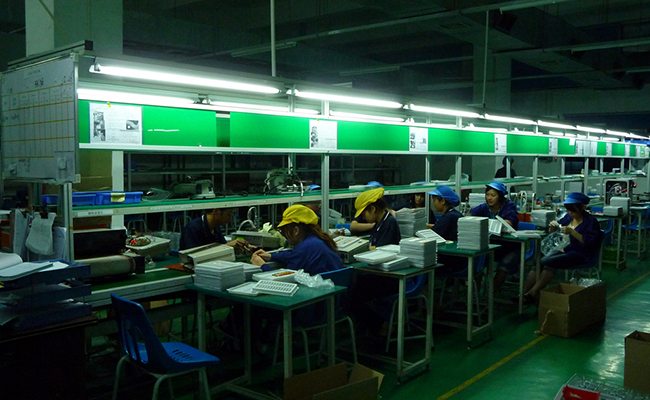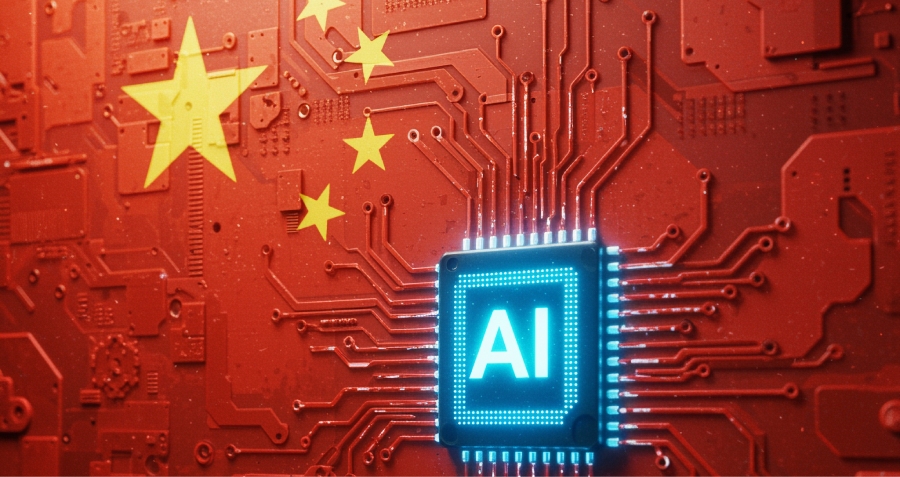What is fuelling China’s push towards homegrown tech innovation?
It’s the early 8th century and the court of the Tang Dynasty is buzzing. Yi Xing, henceforth to be remembered as famous innovator (and also astronomer, mathematician, mechanical engineer, and Buddhist monk) has just revealed his big invention: the world’s first mechanical clock. He sets the precedent for technological innovation through the Tang and following Song dynasties–an era when China was considered the center of the world.
Flash forward to the 19th century. China’s last imperial era, the Qing dynasty, suffers at the hands of foreign imperialism and continued internal rebellion, finally leading to the regime’s collapse. In 1912, China becomes a republic. Innovation takes a serious backseat, while several wars and invading nations cause severe setbacks in industrial development.
Enter 2012.
The dragon seems to be back in business. China is now raring to challenge the US in world-leading technological developments, according to a June 2012 report published by KPMG. But questions arise on what the new leadership will tackle first—and even whether the government’s drive for investment in the sector is enough to create the level of innovation required to reach such a competitive level.
Of the 668 global business executives surveyed in the KPMG report, around 30% of the respondents said that China was the most promising nation in terms of technological breakthroughs, while 29% said that the US may remain a technological innovator. The difference doesn’t appear huge, but the competition is evident.
“If China manages to complete its grand transformation, and shift to a consumption-driven economy, then it is hard to be anything but bullish on the IT sector,” says IHS Global Insight China Economist Alistair Thornton. With incomes on the rise in the nation, Thornton says he believes that the sector will find a broad level of support.
We’re talking here about the world’s second-largest economy, with a population spanning over 1.3 billion people–about 20% of the world’s population. This enormous population (read: consumption power), alone, sets the nation up with an enormous level of influence and economic prowess on the global platform.
“This is a nation with improved user awareness–both individual users and enterprises are keen for new technology, because technology changes their way of doing things, and increases efficiency,” says Fox Hu, Frost & Sullivan China Director of Technology, Media, and Telecoms. So it’s not just nationalistic pride driving the push for technological innovation advancement.
Last year when China released its 12th Five-Year Plan for National Economic and Social Development, it announced an “innovation target” as one of the major additions to the plan. The plan set a target of 3.3 patents per 10,000 people. According to data published by the World Intellectual Property Organization, in 2008 the US ranked after Japan with 400,769 patent applications filed, while China followed in third place with 203,481 patents. The number of patents actually granted was 146,871 in the case of the US, while China lagged behind with 48,814.
Hu says the Chinese government has indeed been openly encouraging technological innovation through offering government subsidies for enterprises, tax benefits, and increasingly promoting private equity investment and issuance of bank loans for new projects. One sector set to benefit through increased funding is new IT—the Internet of Things, or IoT, as it is more commonly known—one of the Chinese government’s seven priority industries on the 12th Five-Year plan. IoT is an industry which takes real-world objects, and connects them via sensory network structures—for example, bar codes. China Telecom’s Tianyi e-commerce smart card project is just one of the companies listed on the government’s 2012 list of IoT companies set to receive funding support.
“We are very optimistic about the growth of the IT sector in China, driven by increased enterprise and government IT expenditure, and the enthusiasm for mobile internet,” says Hu. Network infrastructure and communication has already seen rapid advances over the course of the past few years—mature communication structures and a jump into 3G/4G and optical networks have influenced the drive so far. The consensus seems to be that this is providing an increasing incentive to take the nation’s technological structures a step further, especially among an increasingly youthful population getting involved in entrepreneurial activity in China, he says.
This movement towards domestic technological innovation has certainly come a long way since 2006. The National Medium- and Long-Term Plan for the Development of Science and Technology 2006-2020,a Chinese government publication, planned to kickstart national innovation. The document caused some controversy at that time, with its basic bottomline that foreign companies could not access China markets without transferring their proprietary technology and intellectual property rights to their Chinese partners. These partners could then reproduce the technology as Chinese technology.
These guidelines were officially abolished in 2011, and a homegrown desire to nurture innovation has since overtaken China—with a nationalistic sense of pride to return the nation to its former state of innovative glory, a la the Tang Dynasty era.
“China is at a critical point for its economic transformation, in which innovation plays a vital role,” says Hu. There is a price for IT development, which everyone understands, he says, but that doesn’t make it any less positive or possible that the nation can continue on its unbridled path for technological maturity.
INSEAD’s 2012 Global Innovation Index discusses the need for policies to support the best infrastructure for innovative ecosystems. Although China currently ranks at number 34 in INSEAD’s Global Innovation Index listing, the country’s enormous market has made it a potentially large frontrunner for incubating the right climate for further technological innovation and development. The report cites a significant decline in R&D investments for a number of countries, especially those in Western Europe. This opens up doors for the eastern world, which is still attractive to foreign investment, with economies that have not yet indicated a scaling down as severe as being witnessed in the west.
China’s original push to create a nurturing environment for more advanced technologies began in 1995, with the development of High-Technology Development Zones (HTDZs). These zones have incubators, university research centers, and partnerships with enterprises for manufacturing and marketing technological products. Collaboration has long been credited with providing successful innovative environments, and that is precisely how China’s HTDZ’s have done so well.
Although China has 128 national-level development zones at present, China’s Ministry of Commerce has ranked the Tianjin Economic Technological Development Area (TEDA) as number one in the nation. With a GDP of RMB 88.6 billion in the first half of 2011, TEDA took investment funding and effectively created a solid infrastructure, which functioned alongside an environment open to technological innovation. Electronic information technology formed a large part of business as a result, with convenient access to development laboratories. Another positive factor may have been Tianjin-Binhai’s strategic location on the coast of the Bohai sea–making it easier for companies to navigate export shipments. Motorola, Tencent, and HP, are all contributors to the economy of the TEDA hub.
Taiwan’s success also seems to have been a motivator to mainland China–as it demonstrated that being the recipient of a ‘reverse brain-drain’—foreign-returned engineers—was key to the building of a thriving semiconductor industry there. There has been a noticeable rise in increasing incentives to hire software employees back from larger US companies in Silicon Valley and relocate them in China.
There are, however, many challenges. “R&D spending does not ensure increased financial gains, nor does it guarantee innovation success,” says Booz & Company Partner, John Loehr, who is also global leader of the firm’s Innovation 1000 Study (released in 2011). He cites the case of Apple, Google, and 3M which ranked 53rd, 26th, and 86th, respectively, in R&D spending among the Global Innovation 1000 companies. It’s certainly a thought which China hasn’t yet considered, as the nation focuses on pumping funds to spur innovation.
The infrastructure seems to be falling into place at a rapid pace—intensity of investment is a certain checkmark, along with the creation of the right climate for innovation. However the question now largely lies in whether the relationship is ready to work.
“Can China develop a generation of free-thinking creative engineers that will drive growth in emerging fields? The jury is still out on that one,” says Thornton.
How China restricts foreign competition could be one challenge—legal experts have said that the adoption of an anti-monopoly law, which the nation has proposed, but not yet implemented, may be something that we will see in future. This leads to concern over whether political factors will influence the research laboratories to an extent that homegrown technology loses the desired level of innovation.
“China’s ambition is to become an innovation-oriented society by 2020,” says Richard Li-Hua, Founder and President of the UK-based China Association for Management of Technology. He has outlined several challenges that he believes China will have to face: China’s research environment is detrimental to individual creativity, too politically charged. Science and technology policy-makers have been regarded as overbearing. The education system in China is based on rote-learning, and students tend not to be critical thinkers and not to develop independent thinking.
“With the new leadership in charge, China, though facing pressing challenges, will maintain its economic stability in another decade,” says Li-Hua. “The US and China will no doubt keep their strategic relationship, but in many aspects they remain competitors particularly in technological innovation, which leverages the creation of competitive advantage.”
Alongside these concerns, rests the pressing challenge of enforcement of intellectual property rights. But things seem to be changing–for the better. The number of patent filings and intellectual property lawsuits by domestic Chinese companies have more than doubled in the last year or so. Changes in the law, and a legal system that seems to be better equipped to comply with an increase in homegrown technology—an increasing source of pride and joy at home—is seeing companies such as ZTE and Huawei, both large patent filers, contributing for the push towards a more transparent and domestically innovative system.
We have become used to seeing ‘Made in China, Designed in USA’ on the back of products (check out the back of your Apple iPod box)–but things are looking set to change.
Welcome to the age of ‘Made in China, Designed in China’.
(Image courtesy: dcmaster‘s Flickr photostream)




















